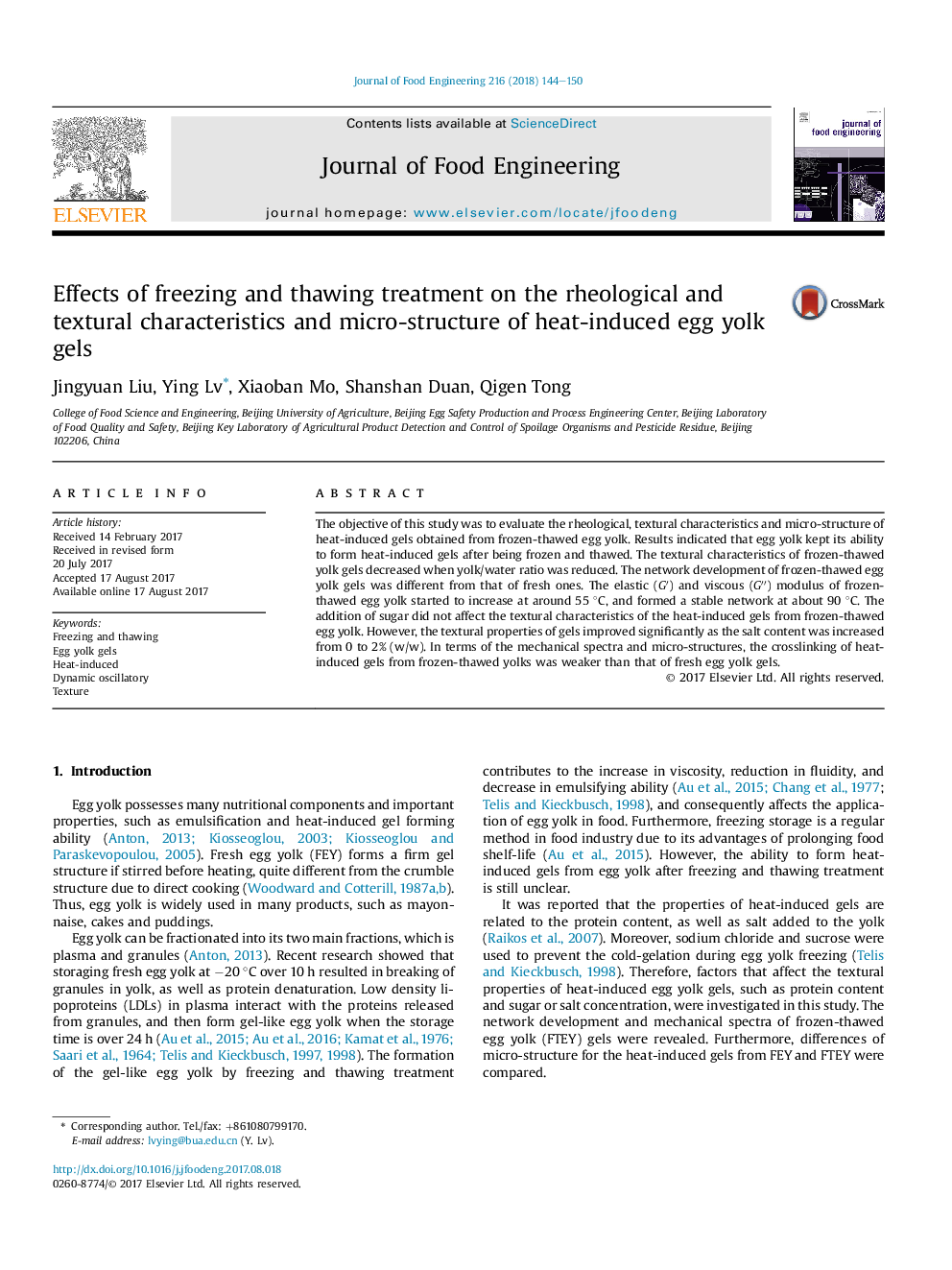| Article ID | Journal | Published Year | Pages | File Type |
|---|---|---|---|---|
| 4908877 | Journal of Food Engineering | 2018 | 7 Pages |
â¢Egg yolk can form heat-induced gels even after being frozen-thawed (FT).â¢FT egg yolk develops its network when frozen, then form crosslinking when heated.â¢Salt addition increases the texture of FT egg yolk gel, while sugar one does not.â¢FT egg yolk gel formed under heat treatment presented a relatively weaker crosslinking.
The objective of this study was to evaluate the rheological, textural characteristics and micro-structure of heat-induced gels obtained from frozen-thawed egg yolk. Results indicated that egg yolk kept its ability to form heat-induced gels after being frozen and thawed. The textural characteristics of frozen-thawed yolk gels decreased when yolk/water ratio was reduced. The network development of frozen-thawed egg yolk gels was different from that of fresh ones. The elastic (Gâ²) and viscous (Gâ³) modulus of frozen-thawed egg yolk started to increase at around 55 °C, and formed a stable network at about 90 °C. The addition of sugar did not affect the textural characteristics of the heat-induced gels from frozen-thawed egg yolk. However, the textural properties of gels improved significantly as the salt content was increased from 0 to 2% (w/w). In terms of the mechanical spectra and micro-structures, the crosslinking of heat-induced gels from frozen-thawed yolks was weaker than that of fresh egg yolk gels.
